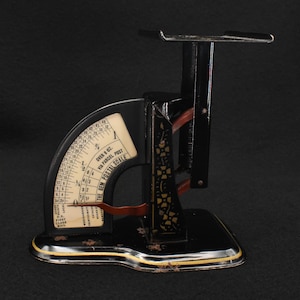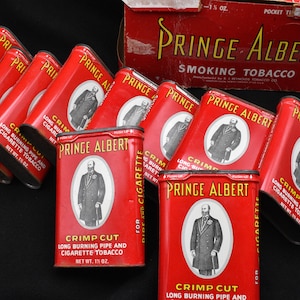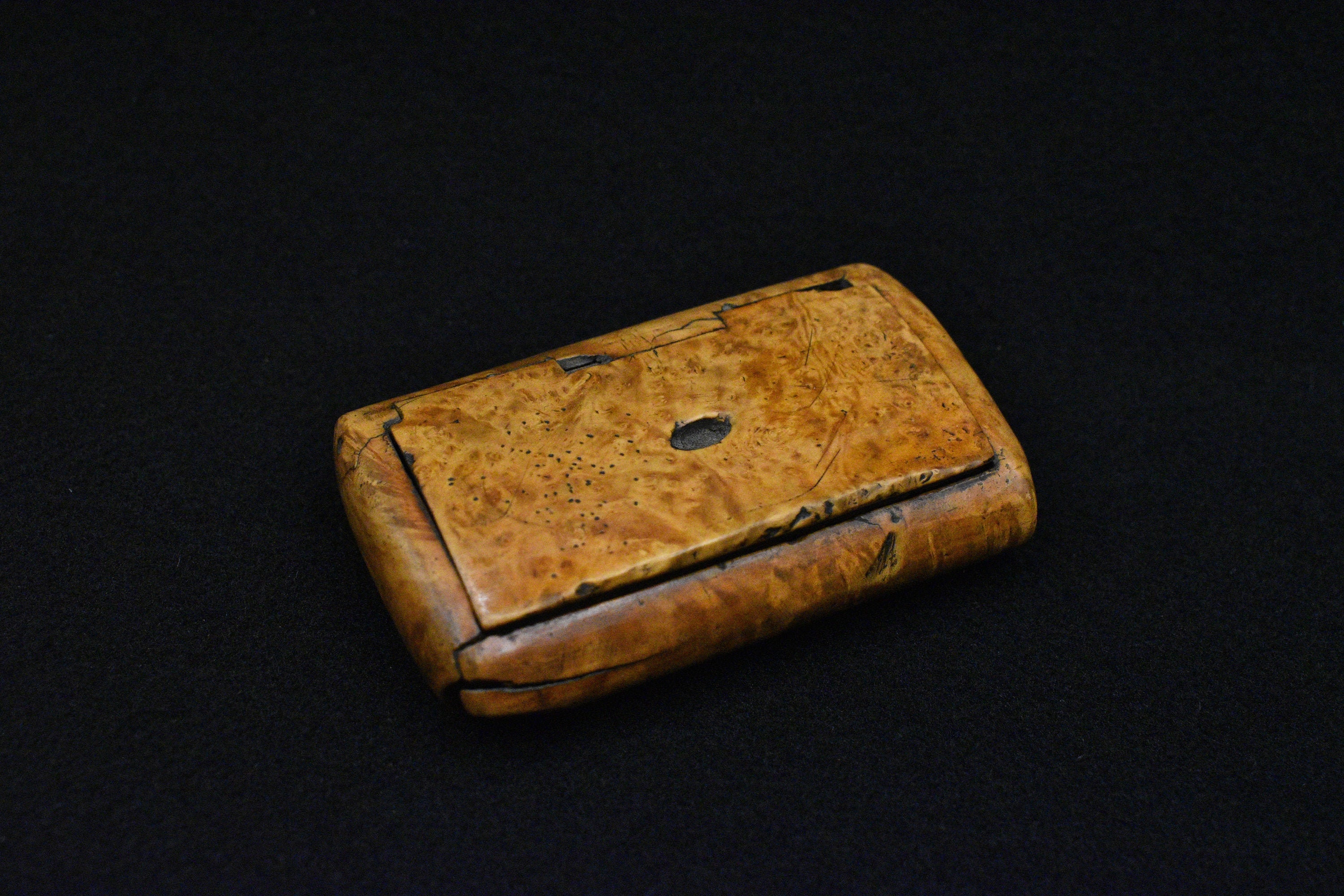
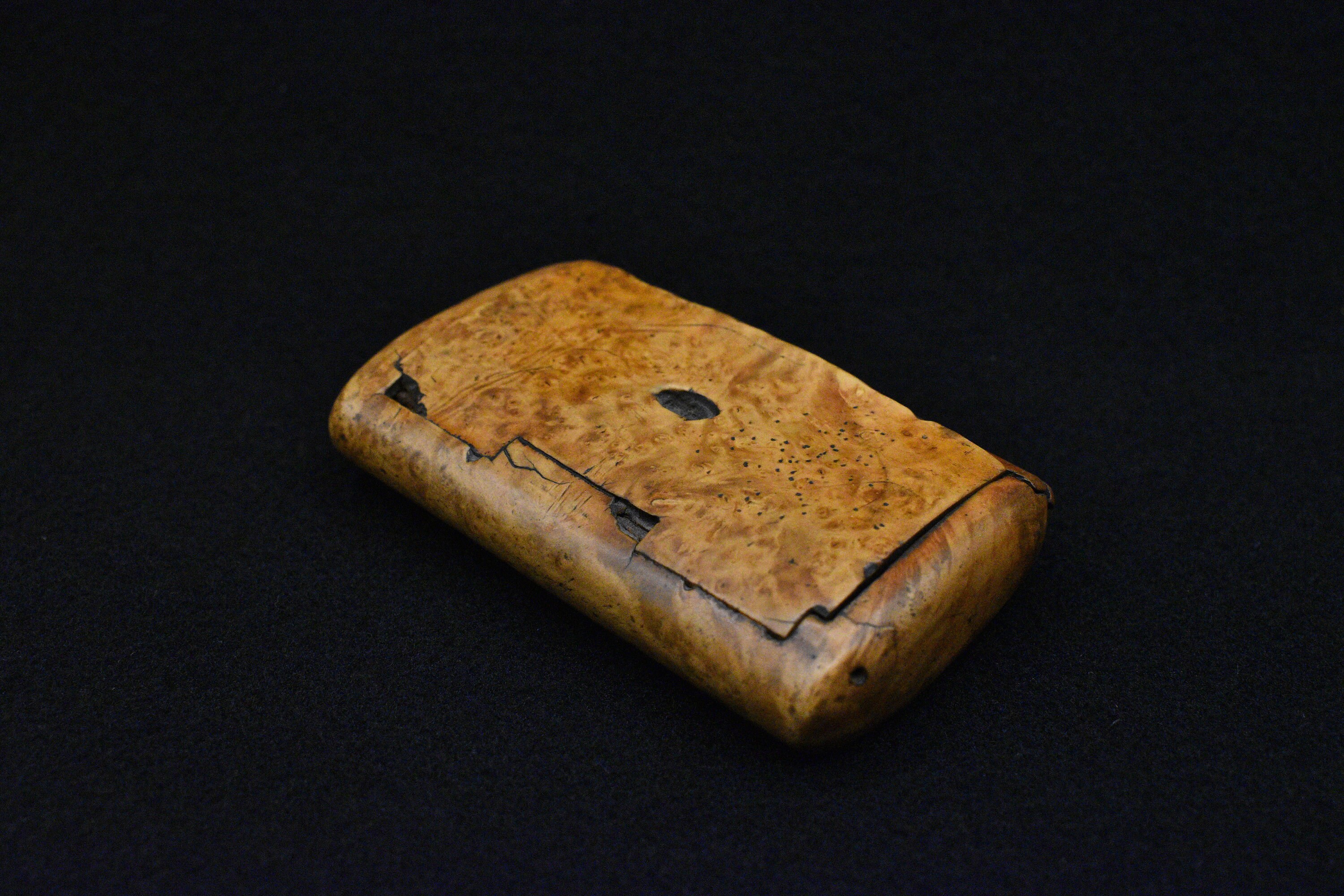
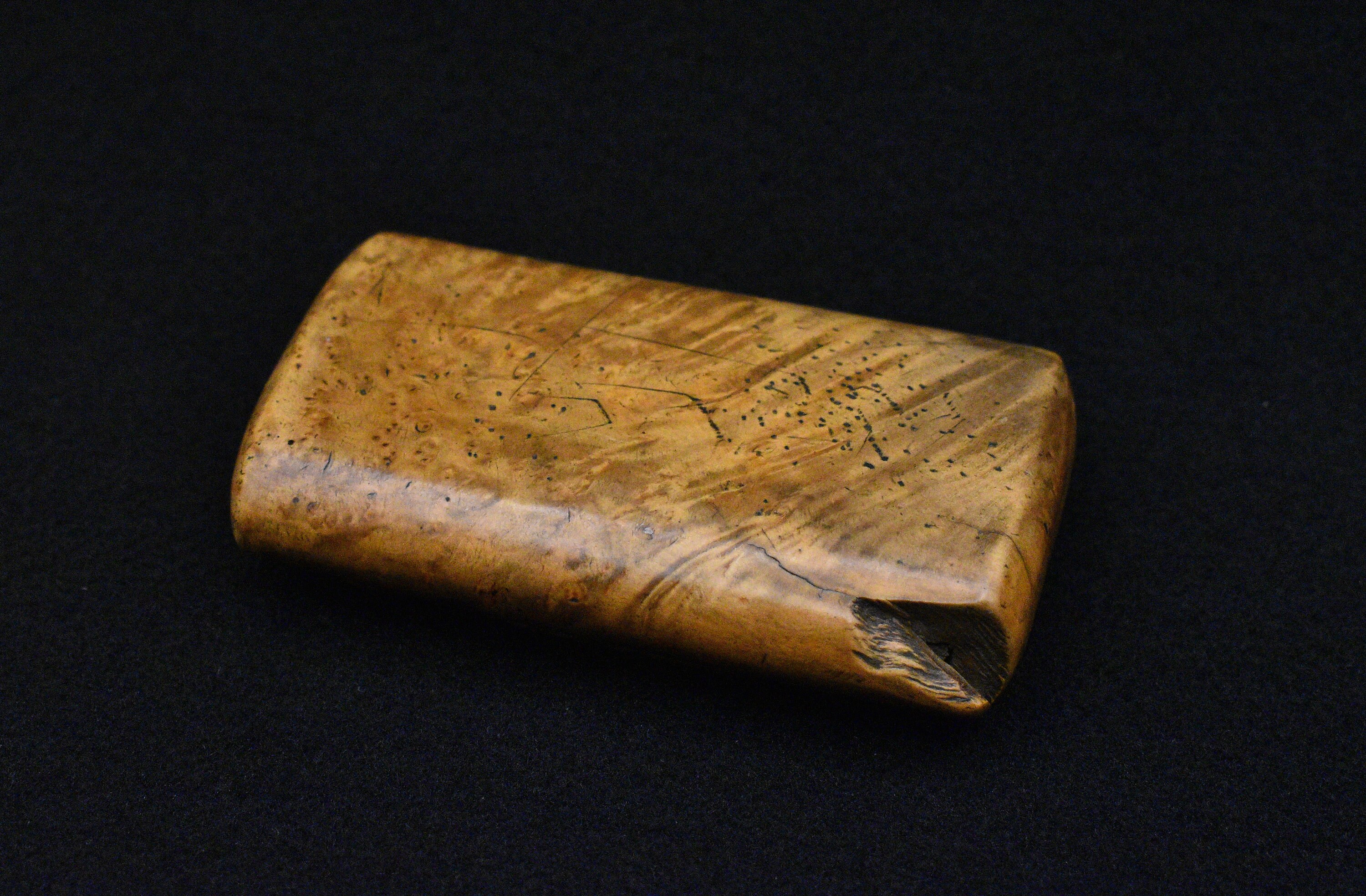
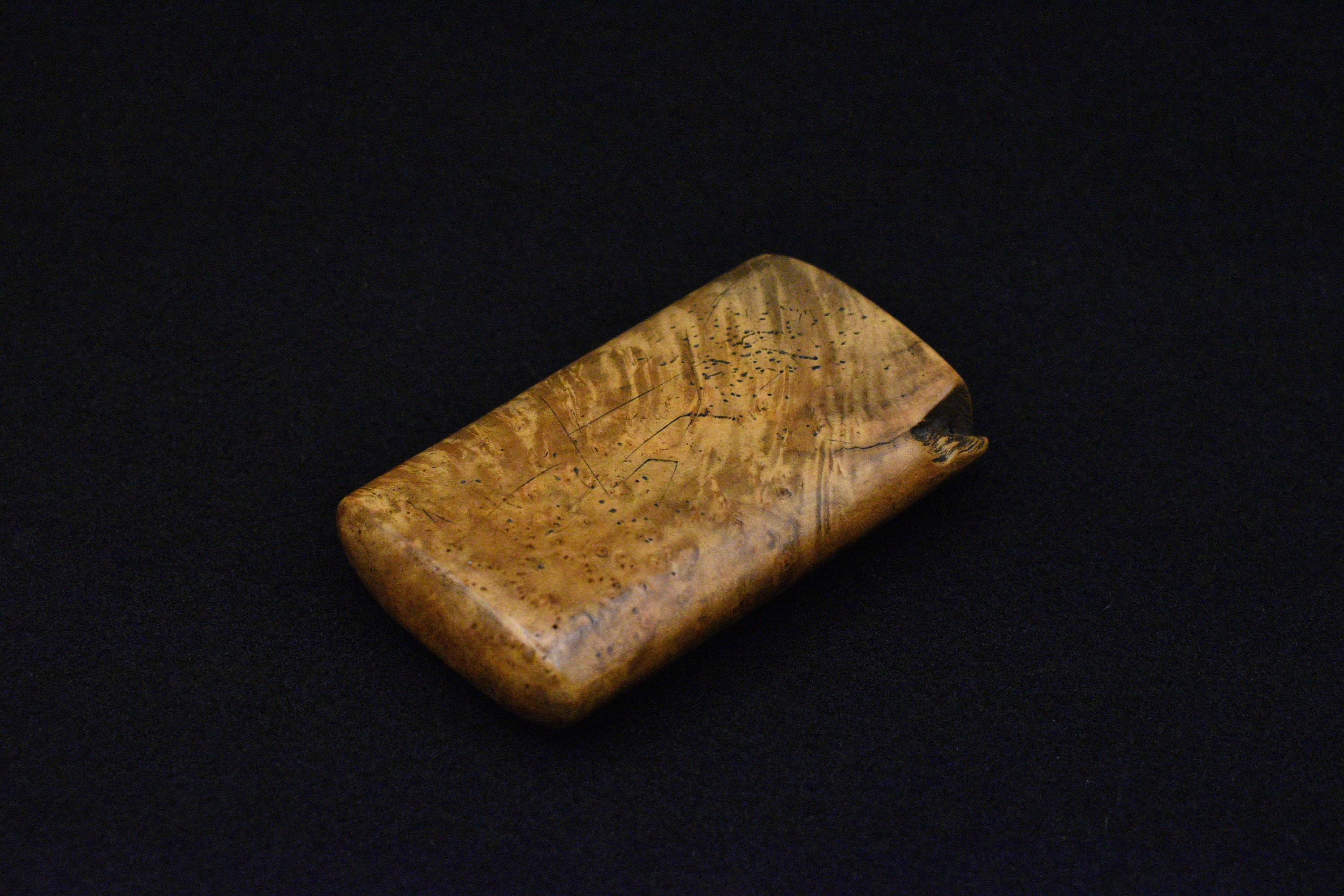
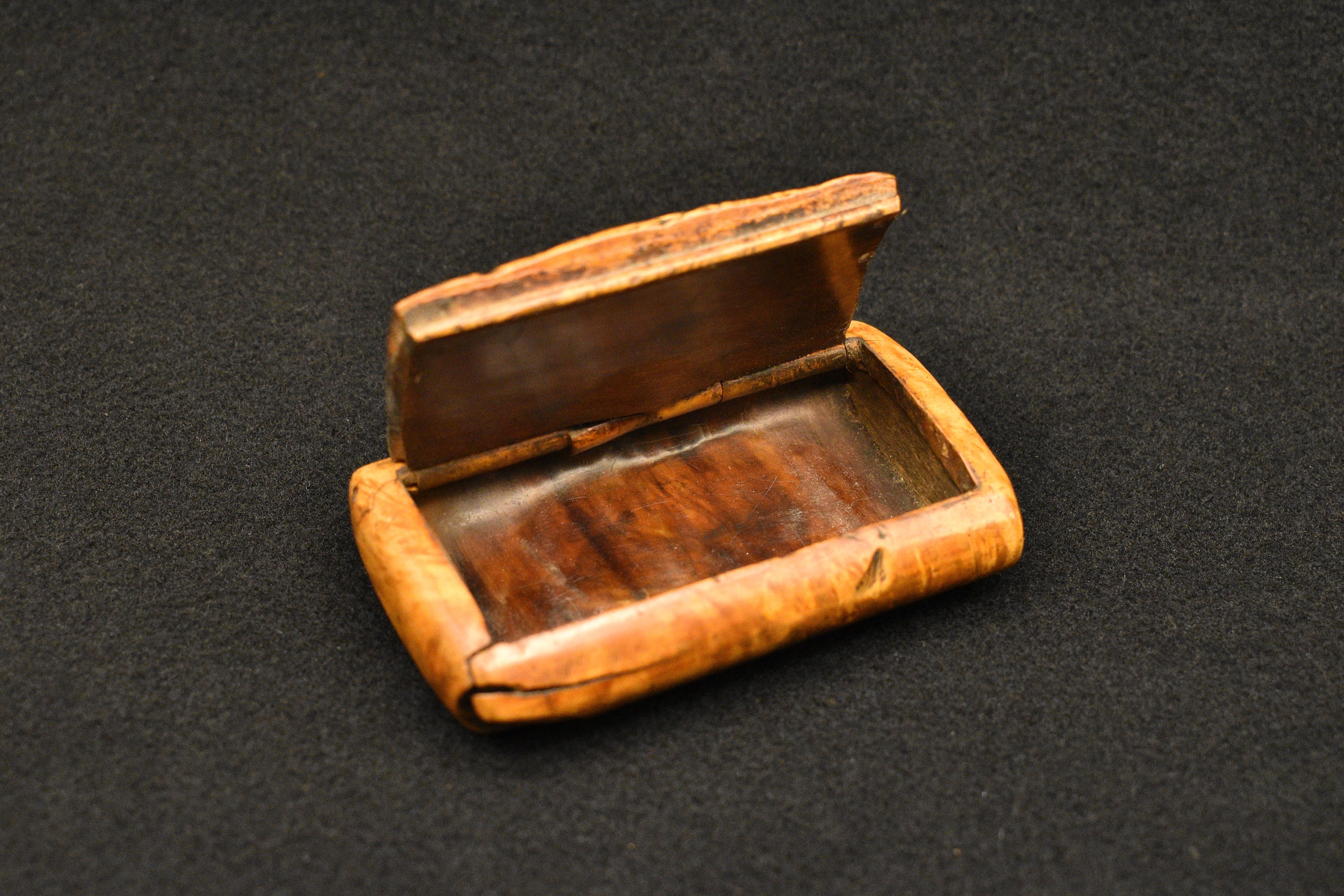
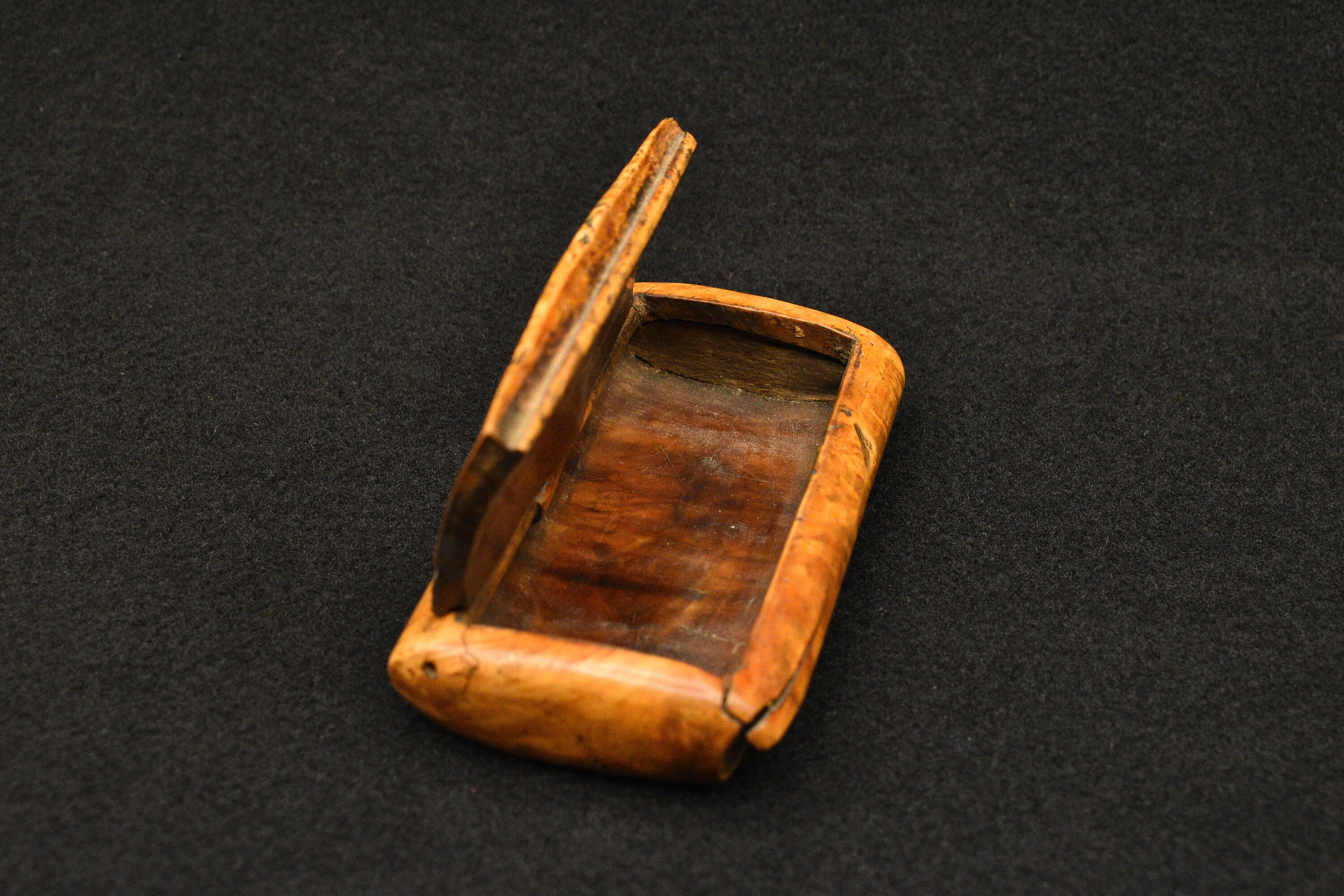
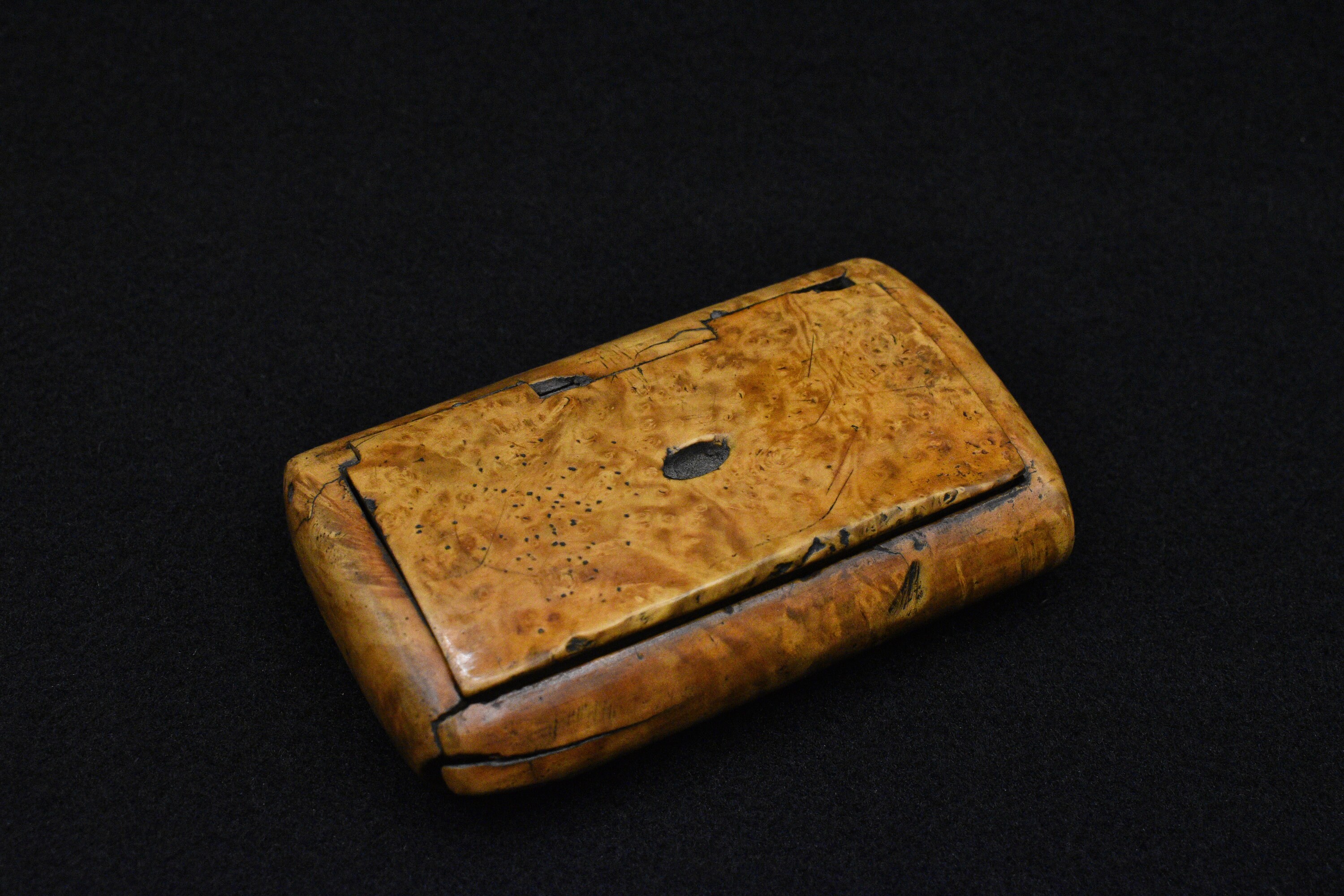
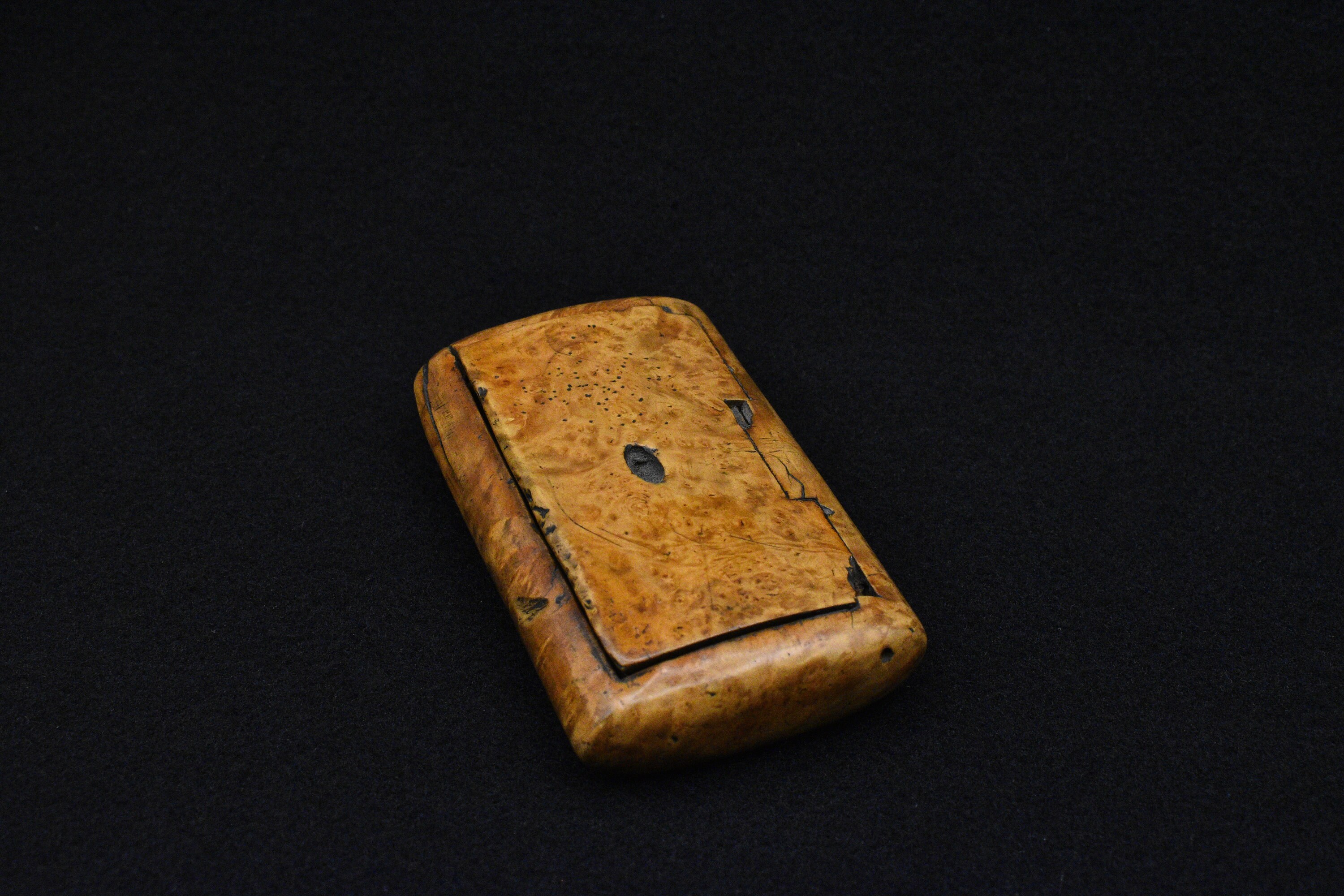
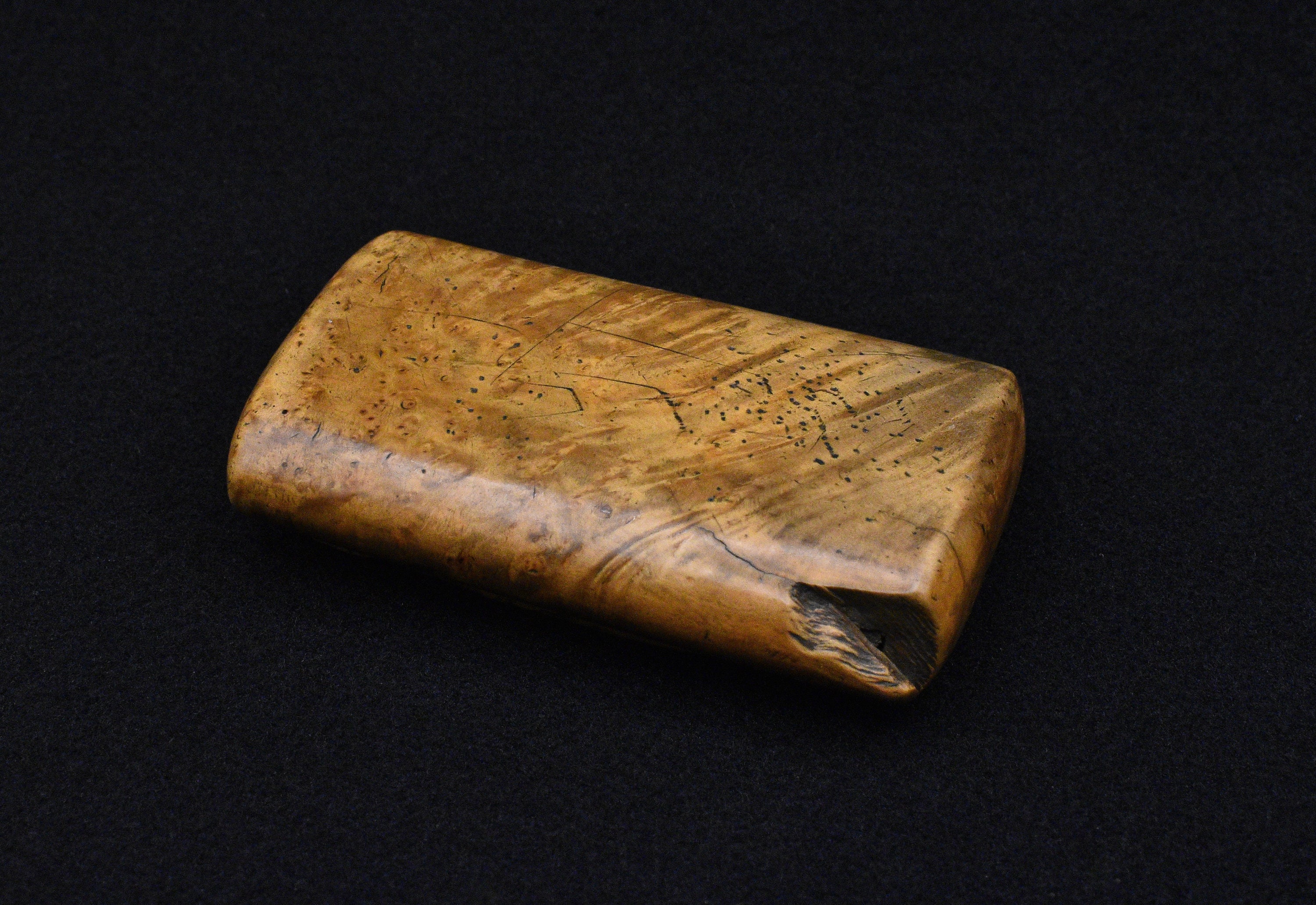
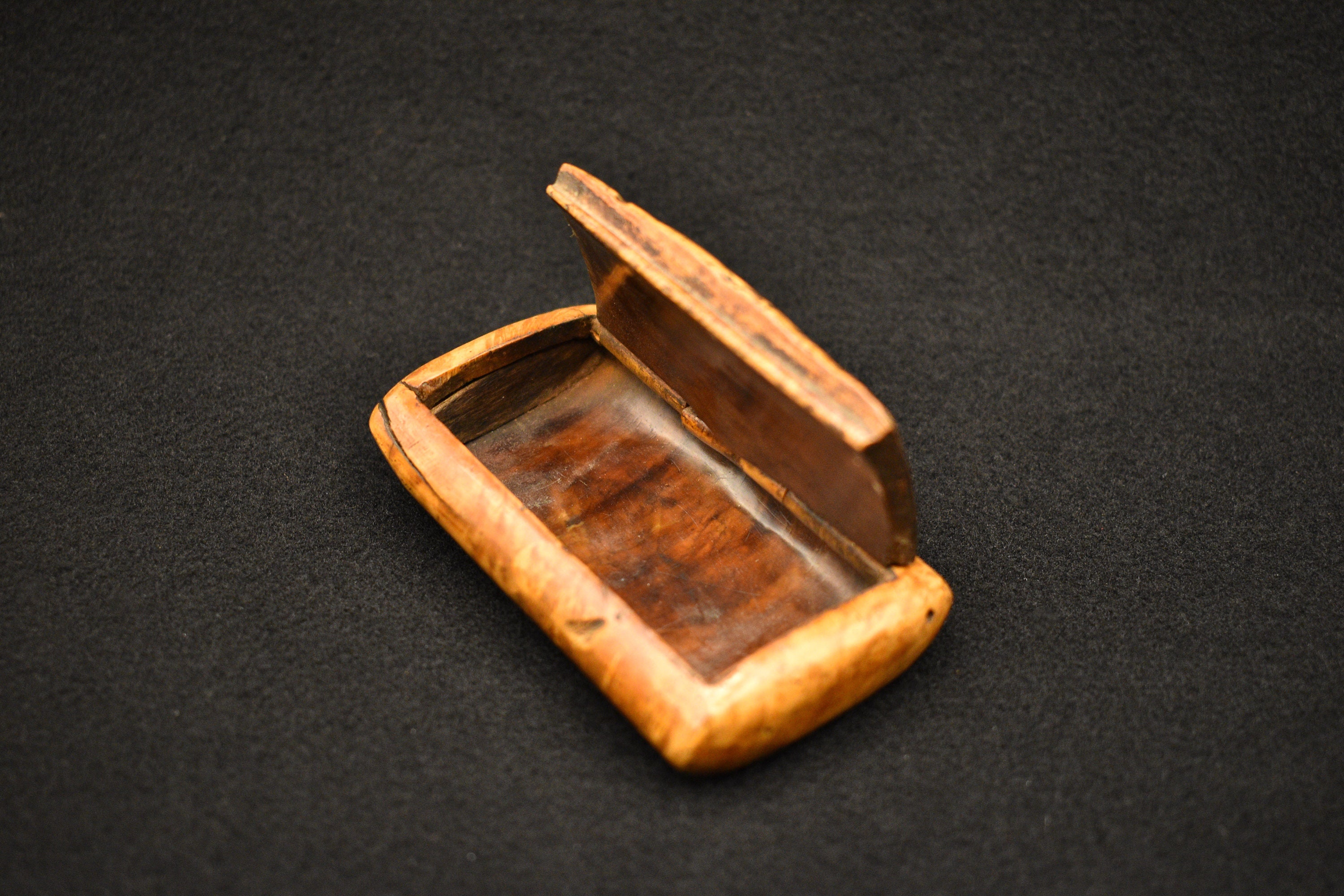
Antiques
19th Century Burl Snuff Box
-
DetailsWhat a wonderful little piece of history...
'Snuff' is not known to many people. The practice of snuff-taking dates back to the colonial period of America. Tobacco had been known to the indigenous populations of South and North America for centuries. When the original colonials arrived, tobacco was unknown to them. However, being a staple crop of the Natives, it was quickly introduced to the new visitors and the addictive nature of tobacco quickly took hold. Word of this new crop filtered through to the Continent (Europe) and was quickly made popular by this finely-ground tobacco product. Basically, snuff was a powder, made of tobacco and other spices, that was inhaled into the nose, providing a quick burst of nicotine as well as pleasant aromas added by various spices. The practice became quite popular in Europe and, by the 1500s, became entrenched in European society. Snuff consumption was an expensive and sought-after habit. By the 1600s, it had spread throughout Europe and into Asia and became one of the most traded commodities on the planet.
Snuff was a powdered form of tobacco, but it needed to be kept moist. It had the tendency to dry out and was finicky to keep fresh. Snuff boxes were air-tight containers developed to keep the snuff fresh. Made of shell, horn, silver, gold, wood and even paper-mache, snuff boxes became the must-have accessory for royalty and upper-classes, alike. Soon, the masses demanded the same products and the snuff accessory market exploded.
Snuff boxes ranged in size, as well. Originally, they were only made in table-top versions, allowing for the storage of snuff in various rooms of the home. However, this was quickly supplanted by pocket-sized boxes, a far more convenient way to access your snuff whenever you desired. The variety of boxes and accessories was matched only by the variety of artists who produced them. From local carpenters to famed jewelry makers, these snuff boxes were made by all. In fact, in the 19th century, even Faberge himself designed some of the most intricate and beautiful jewelled boxes for royalty and the socially-elite.
This snuff box is very old. I mentioned 19th century, but it's possible that this dates back to the 18th century. The style is commonly found in 18th century European designs and continued throughout the 1800s. Although snuff boxes for the rich and privileged could be made of silver and gold, adorned with jewels and precious materials, these were not commonly available. Wooden boxes were preferred for their resiliency when it came to environment. Most sailors partook in snuff-taking and wooden boxes worked well, able to withstand a few knocks without affecting their function. However, regular wood wouldn't do. When growth rings of a tree were exposed, repeatedly, to the moisture of the snuff, they would begin to come apart and leak. It was essential for these boxes to be air-tight, so this was unacceptable. As such, burl wood snuff boxes were constructed. 'Burl' signifies the almost tumour-like growths one finds on trees. Growth rings are not present in burl, so the material can be formed into air-tight and very strong containers.
The box is in decent shape. There is some structural damage, with a few gouges and chips. There is an ever-so-tiny hole on the corner missing a chunk, but it's too small for even a needle to fit through. In fact, you'd be hard-pressed to spot it and only by allowing light to shine on the blemish would you spot the light just barely shining through. The lid opens and closes perfectly and although no longer air-tight, it is a very handsome piece. You may notice the hole on the cover. This was originally filled with a mother-of-pearl inlay. These inlays are very uncommon, today, as these pieces would frequently fall out. The hinge is in good shape and the pin is complete and original. The design of the lid and the hand-carved quality of the hinge shows the age of this beautiful, hand-made piece of art. One can still see the finishing marks of the original carpenter, along the lid and lip and you can just imagine the level of craftsmanship that would have gone into fitting these lids to an air-tight construction. The hinge, especially, fascinates me. The craft is just stunning.
The box measures almost 8 cm wide, 4.5 cm deep and almost 2 cm tall. It is a simply beautiful piece of history and would make a wonderful gift to the tobacciana collector.
As always, should you have any questions or comments, I'm always happy to respond to messages almost immediately.
Thanks for visiting C&K! -
Shipping & Policies
Shipping from Canada
Processing time
1-2 business days
Customs and import taxes
Buyers are responsible for any customs and import taxes that may apply. I'm not responsible for delays due to customs.
Payment Options
Returns & Exchanges
I gladly accept returns and exchanges
Just contact me within: 3 days of delivery
Ship items back to me within: 7 days of delivery
I don't accept cancellations
But please contact me if you have any problems with your order.
The following items can't be returned or exchanged
Because of the nature of these items, unless they arrive damaged or defective, I can't accept returns for:
- Custom or personalized orders
- Perishable products (like food or flowers)
- Digital downloads
- Intimate items (for health/hygiene reasons)
Conditions of return
Buyers are responsible for return shipping costs. If the item is not returned in its original condition, the buyer is responsible for any loss in value.
Frequently Asked Questions
Can I combine delivery on multiple items?
Of course! We'd be happy to assist. Just send us a quick message and we'll make sure to combine your items into a single package to reduce the shipping costs.
